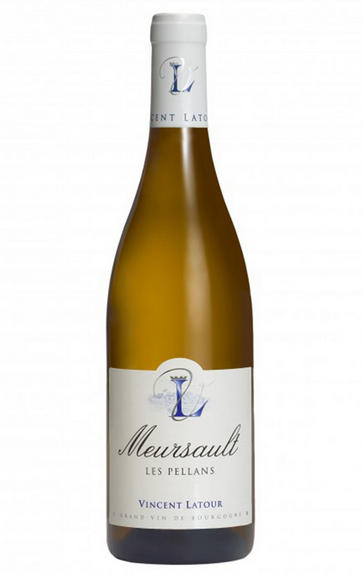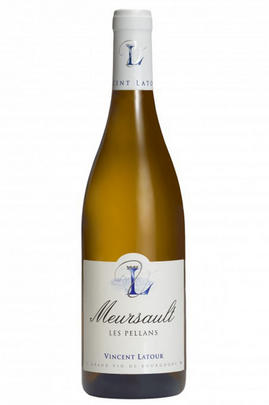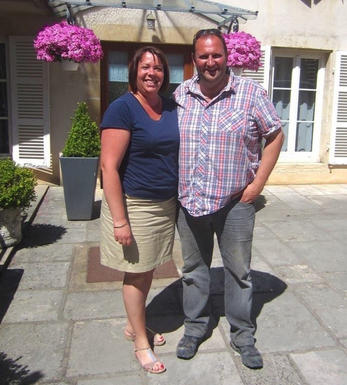
2020 Meursault, Les Pellans, Vincent Latour, Burgundy

Critics reviews
Firm reduction renders the nose unreadable, so be sure to give this some air first. On the palate, the medium-weight flavours aren't quite as dense, but they are finer, with fine underlying tension to the refreshing finish that offers just a bit more complexity and persistence. This should clean up once the pre-bottling sulfur addition integrates.
Drink from 2025 onward
Allen Meadows, Burghound.com (June 2022)
Plenty of wood but this works well in combination with the richness of ripe fruit on the palate. Lingering acidity and some mineral notes on the finish. Weighty. Long and lingering finish.
Drink 2023 - 2030
Andy Howard MW, JancisRobinson.com (January 2022)
About this WINE

Domaine Vincent Latour
Founded in 1792 and known for most of its history as Domaine Latour-Labille, Domaine Vincent Latour is based in the very centre of Meursault. This family estate is now run by Vincent and his wife, Cécile. It covers nine hectares of enviable holdings, principally in Meursault but also in the neighbouring villages of Volnay, Pommard, Chassagne-Montrachet and St Aubin. The estate fruit is supplemented by some grape purchases equating to around three or four hectares.
Stylistically, Vincent’s white wines sit in a happy mid-point between the traditional, rich and broad-shouldered Meursault of old and the early picked, austere and reductive style that has become fashionable recently. He seeks sucrosity and ripeness while aiming to retain freshness and tension. As such, the wines tend to appeal to traditional and modern tastes alike.
The fruit is crushed before pressing, then the juice is lightly settled before fermentation in barrel. Vincent does not do any bâtonnage. The wines are aged on fine lees for their first year in barrel, before spending the second winter in tank or foudre to harmonise before bottling. Vincent favours larger oak barrels of around 500 litres as opposed to the traditional 228-litre pièce historically used in Burgundy. This gives the wines greater freshness and energy and reduces the impact of the wood on the wine. As such, oak plays a supporting role, and the wines have purity of fruit and a fresh, mineral structure.

Meursault
There are more top producers in Meursault than in any other commune of the Côte d’Or. Certainly it is the most famous and popular of the great white appellations. Its wines are typically rich and savoury with nutty, honeyed hints and buttery, vanilla spice from the oak.
Even though it is considerably larger than its southerly neighbours Chassagne and Puligny, Meursault contains no Grands Crus. Its three best Premiers Crus, however – Les Perrières, Les Genevrières and Les Charmes – produce some of the region’s greatest whites: they are full, round and powerful, and age very well. Les Perrières in particular can produce wines of Grand Cru quality, a fact that is often reflected in its price. Meursault has also been one of the driving forces of biodynamic viticulture in the region, as pioneered by Lafon and Leflaive.Many of the vineyards below Premier Cru, known as ‘village’ wines, are also well worth looking at. The growers vinify their different vineyard holdings separately, which rarely happens in Puligny or Chassagne. Such wines can be labelled with the ‘lieu-dit’ vineyard alongside (although in smaller type to) the Meursault name.
Premier Cru Meursault should be enjoyed from five to 15 years of age, although top examples can last even longer. Village wines, meanwhile, are normally at their best from three to 10 years.
Very occasionally, red Meursault is produced with some fine, firm results. The best red Pinot Noir terroir, Les Santenots, is afforded the courtesy title of Volnay Santenots, even though it is actually in Meursault.
- 305 hectares of village Meursault. The best vineyards include Clos de la Barre, Tesson, Chevalières, Rougeot, Narvaux
- 132 hectares of Premier Cru vineyards (17 in all). The finest vineyards include Les Perrières, Les Genevrières and Les Charmes
- Recommended producers: Comte Lafon, Arnaud Ente, Coche Dury, Guy Roulot, Jean-Philippe Fichet, Patrick Javillier, François Jobard, Michel Bouzereau
- Recommended restaurant: Le Chevreuil

Chardonnay
Chardonnay is often seen as the king of white wine grapes and one of the most widely planted in the world It is suited to a wide variety of soils, though it excels in soils with a high limestone content as found in Champagne, Chablis, and the Côte D`Or.
Burgundy is Chardonnay's spiritual home and the best White Burgundies are dry, rich, honeyed wines with marvellous poise, elegance and balance. They are unquestionably the finest dry white wines in the world. Chardonnay plays a crucial role in the Champagne blend, providing structure and finesse, and is the sole grape in Blanc de Blancs.
It is quantitatively important in California and Australia, is widely planted in Chile and South Africa, and is the second most widely planted grape in New Zealand. In warm climates Chardonnay has a tendency to develop very high sugar levels during the final stages of ripening and this can occur at the expense of acidity. Late picking is a common problem and can result in blowsy and flabby wines that lack structure and definition.
Recently in the New World, we have seen a move towards more elegant, better- balanced and less oak-driven Chardonnays, and this is to be welcomed.


Buying options
Add to wishlist
Description
Firm reduction renders the nose unreadable, so be sure to give this some air first. On the palate, the medium-weight flavours aren't quite as dense, but they are finer, with fine underlying tension to the refreshing finish that offers just a bit more complexity and persistence. This should clean up once the pre-bottling sulfur addition integrates.
Drink from 2025 onward
Allen Meadows, Burghound.com (June 2022)
wine at a glance
Delivery and quality guarantee